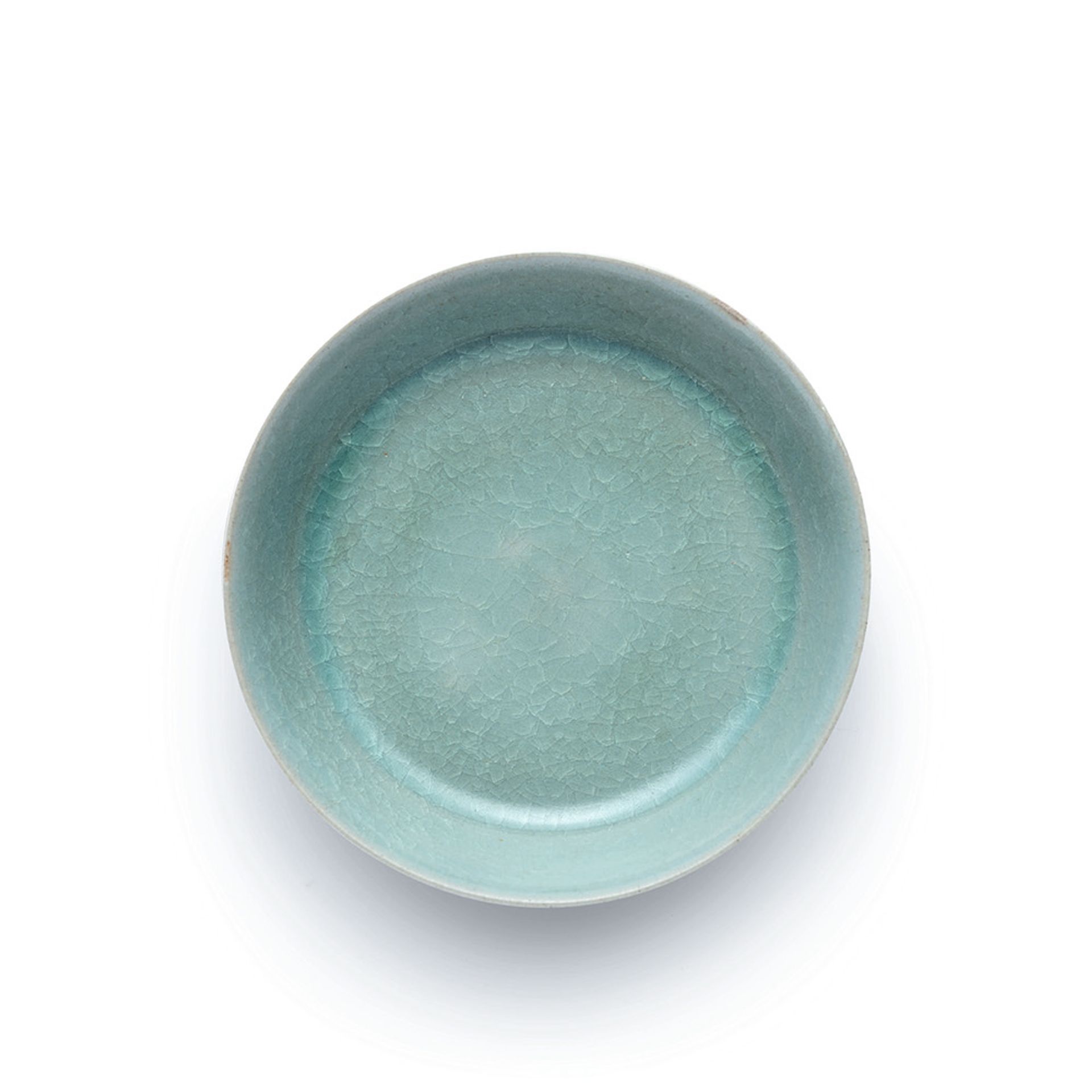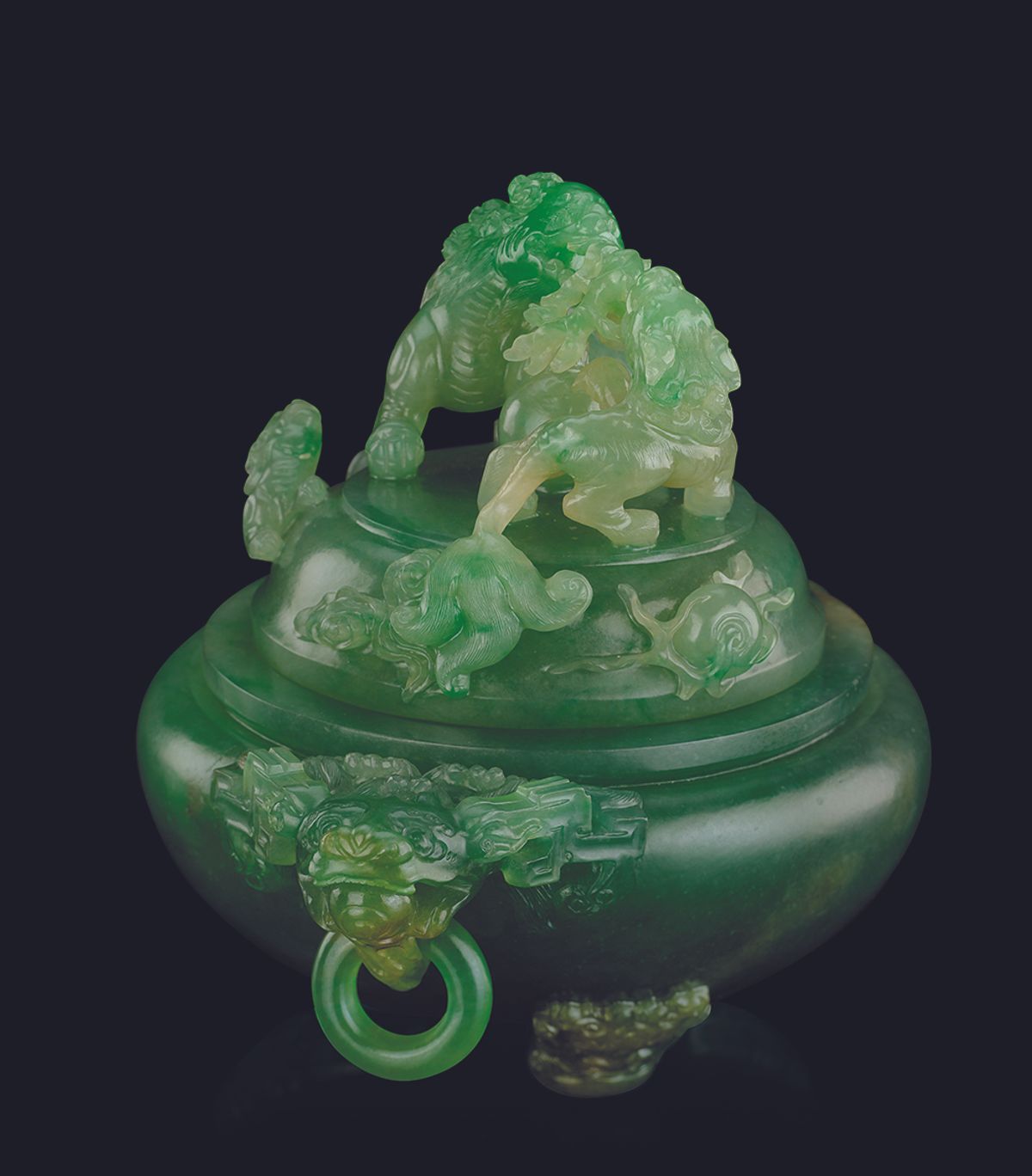Fine Art Asia, Hong Kong, 30 September-3 October
On Tung Jewellery
An imperial green jadeite tripod censer and cover incised with Qianlong Yu Zhi seal mark (18th century)
HKD $25m
In the 12th edition of the Asian art fair, the Hong Kong-based dealer Stanley Chu of On Tung Jewellery is offering an imperial jadeite censer created during the Qing Dynasty. The semi-translucent emerald green censer was carved from a large jadeite stone native to Myanmar, which, for centuries, has been heralded by Chinese collectors for its output of fine jadeite. The work, which has two handles and is incised with the seal of the emperor Qianlong Yu Zhi, is a rare artefact not only because of its imperial provenance but also because it has a glassier finish and a finer grain than most jadeite carved in that period, Chu told The Art Newspaper. The work contains motifs of Buddhist lions and dragon heads, each gripping a flaming pearl in their jaw. “The lions are vivid and lively and the cover is perfectly fitted in the censer—this work of art is a combination of rarity of material, excellent craftsmanship and perfect condition”, adds Chu.

Bonhams
Bonhams, Hong Kong, 3 October: Images of Devotion
A Tibetan bronze figure of Akshobhya (15th century)
Est. HKD $15m-$25m
The house’s sale of devotional works of art includes a 600-year-old bronze figure of the Buddhist deity Akshobhya, who is known in tantric traditions as the ‘immovable one’, or the Buddha of patience (and is also called Shakyamuni, Mitrugpa, Migyurpa or the Buddha of the East). Made of gilt copper alloy set with semi-precious stones, the sculpture is the only known example of its kind still held privately, although similar sculptures of Akshobhya are in major collections, including the Metropolitan Museum of Art and the Rubin Museum, among others. The Buddha, who has an ungilded alms bowl in his lap, wears an ornate floral robe and holds a vajra, a ritual object that symbolises the ‘five wisdoms’ of Buddhism. The work was likely created as “a special commission [that is] possibly unique in its use of incised and inset techniques to replicate textile patterns” in the robe, Edward Wilkinson, the house’s global head of Indian, Himalayan and Southeast Asian art, said in a statement.
Update: the work sold for HK $18,060,000.

Sotheby's
Sotheby’s, Hong Kong, 3 October: Chinese Works of Art
Ru guanyao brush washer (around 960-1127)
Est. In excess of HKD $100m
This blue-green Ru guanyao brush washer, a work that the house says has “quasi-mythical” rarity, was produced during the late Northern Song Dynasty in China and is one of just three such examples still in private hands. The Ru guanyao, a celebrated ceramic type that was the official ware of the imperial Song court, had a short production period of fewer than twenty years, during the reign of the emperors Zhezong and Huizong. Such celadons are distinct for their luminous glazes and interlacing crackled pattern. The work, which is around 13cm in diameter, once belonged to the collection of the Chang Foundation in the Hongxi Museum, Taipei, and is one of a series of objects in the sale offered by the Taiwanese collector Cao Xingcheng, who calls his collection “Le Cong Tang”, or Chinese for “happy to obey”, a phrase that he associates with being the ‘keeper’ of such relics. Similar Ru brush washers can be found in the collection of the Palace Museum, Beijing and the National Palace Museum, Taipei.
Update: the work sold for HK $294.3m , the record for Chinese ceramics.


